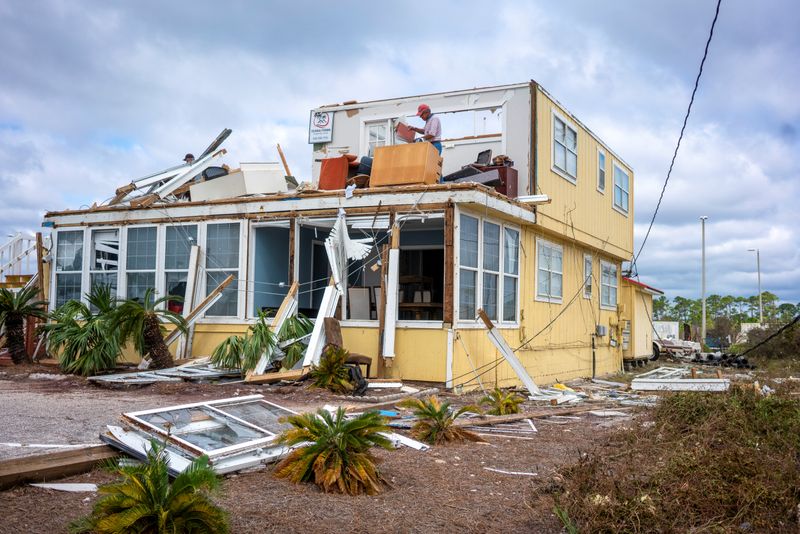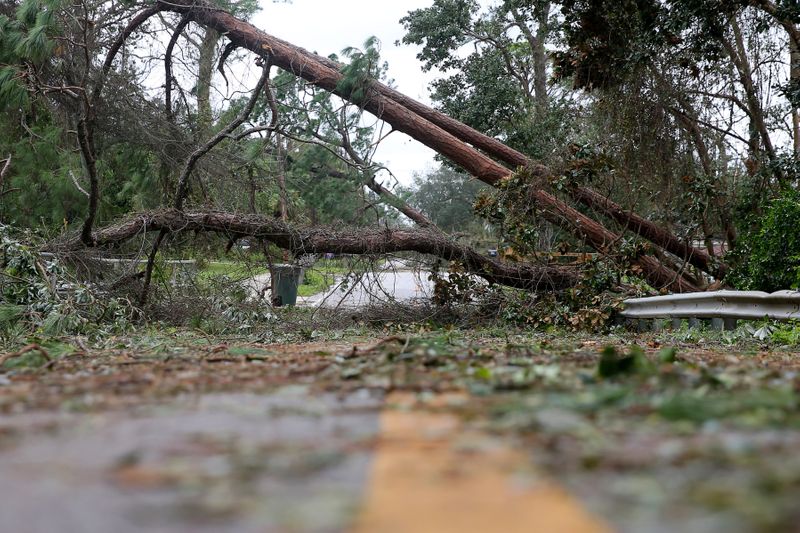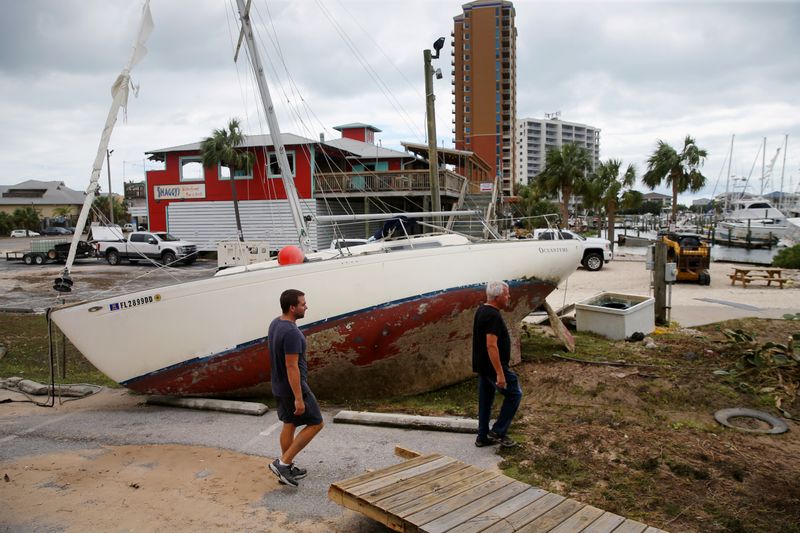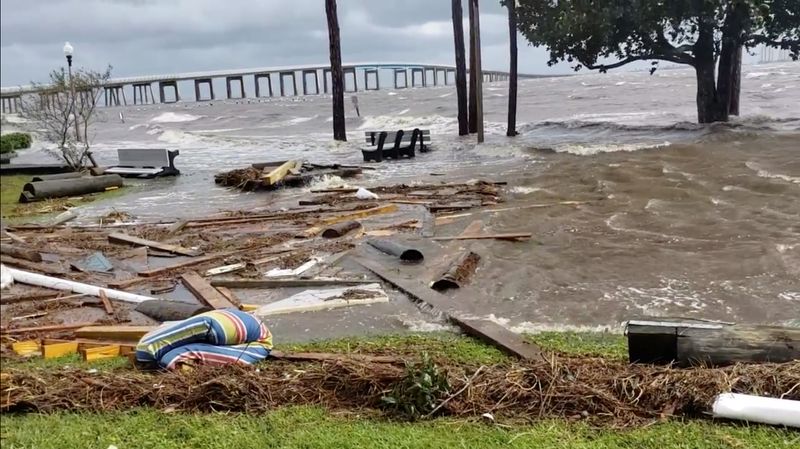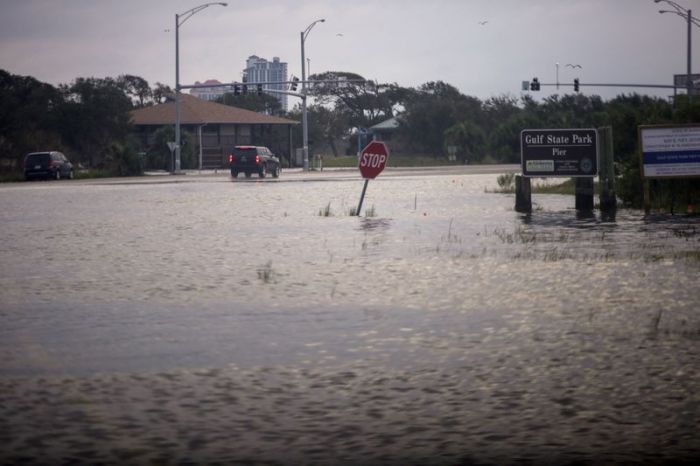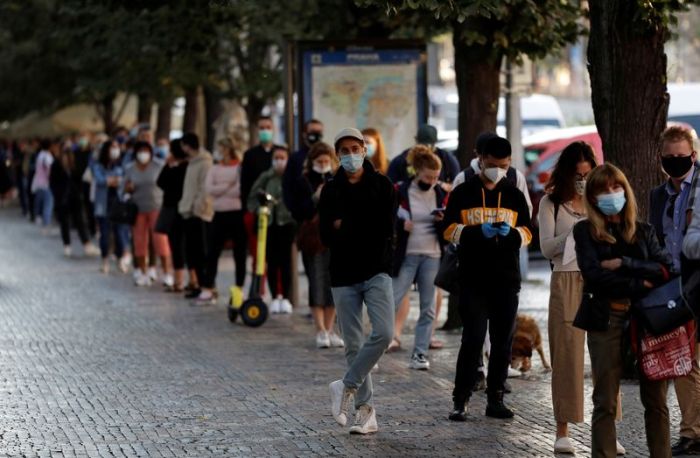GULF SHORES, Ala./HOUSTON (Reuters) – As an Alabama resident, Toby Wallace has seen his fair share of hurricane damage working for the U.S. Federal Emergency Management Agency, where he handles flood insurance claims.
But that did not prepare him for Hurricane Sally, which flipped his camper and pushed it into his Gulf Shores home, breaking off the front steps. High winds drove water through the vents and roof, flooding a room.
“It’s gonna be a lot of cleaning,” said Wallace, 49.
Wallace and thousands of other residents along the U.S. Gulf Coast are just starting to tally the damage from Hurricane Sally, which could come in anywhere from $8 billion to $10 billion, well above earlier estimates of $2 billion to $3 billion, said Chuck Watson of Enki Research, which tracks tropical storms and models the cost of their damage.
Hurricanes are normally associated with massive wind gusts and rains on the coast, but inland rains causing floods over a vast region can make a storm even worse, as rivers and streams spill over, flooding communities along the way and causing the damage to as much as double. Slow moving storms Harvey, which hit Houston in 2017, and Florence, which slammed the Carolinas in 2018, dumped damaging rains.
Sally made landfall at Gulf Shores on Wednesday morning as a Category 2 hurricane on the five-step Saffir-Simpson scale of intensity, but carried heavy rain inland as far north as Virginia on Thursday, according to the National Weather Service.
Sally’s immediate impact likely caused around $5 billion in damage and cleanup costs, Watson said. The storm has moved away from the coast but will bring several more inches of rain to the U.S. Southeast before dissipating.
“If you’re sitting on a river 5 miles (8 km) inland, you’ve got the wind and 2 feet (0.61 m) of rain dumped on you, then four to six days later a few feet of water comes down the river,” Watson said. Inland rains also could affect cotton and peanut harvesting, as five counties in central Georgia got more than 10 inches (25 cm) in 12 hours, Watson said.
Several rivers in Alabama and Florida have not yet crested and are not expected to reach “major flood” stages until Saturday, according to the National Weather Service.
EXTENSIVE WATER DAMAGE
Evidence of water damage was rampant as the floods receded along the coast. The facade of an eight-floor apartment building in Gulf Shores was completely blown off, and damaged kitchens and bedrooms were visible, with furniture soaked from the torrential rains that pelted the area on Wednesday.
Lee Hayes of Perdido Key, Florida, at one point during the storm had her kayak ready on the couch and put life jackets on herself and her dog, Rico, as water rose under her deck, rushed past her bedroom and submerged her car.
“I’m like OK, we are not going to drown,” Hayes, 56, remembered thinking. “I’m really tired. We were under my blanket and I held him close.”
Slow-moving storms like Sally damage “more cars than you would expect,” said Don Griffin, a vice president at the American Property Casualty Insurance Association, an insurance trade group. Flooded cars are often a total loss due to damage to their electrical systems, he said.
Around 11,000 homes were at risk from storm surge, though the final tally of damaged homes will likely be lower, said Tom Larsen, a principal with property data and analytics firm CoreLogic. “What is a little different here is that many coastal homes had to survive up to 20 hours of these winds which can increase damage,” Larsen said.
In Gulf Shores, Paula Hendrickson, 70, evacuated her home near the water and went slightly inland to her sister’s place, thinking it would be safer.
But the wind ripped a fan off the front balcony of her sister’s home and damaged the roof, and Hendrickson’s car ended up flooded by saltwater and is likely a total loss.
“If you’ve been in an airplane that hits turbulence, that’s exactly how it felt. On and off, on and off. All night long,” Hendrickson said, adding, “I’ll never go through it again.”
(Reporting by Jennifer Hiller and Devika Krishna Kumar; editing by Steve Orlofsky and Timothy Gardner)

